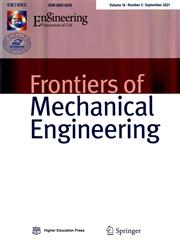用于热带湿热气候的风致蒸发冷却被动系统
IF 4
2区 工程技术
Q1 ENGINEERING, MECHANICAL
引用次数: 1
摘要
多年来,人们对更好的热舒适生活的渴望得到了广泛的讨论,需求很大,尤其是在大都市。除了预期的结果外,空调设施已经实施,但它们也带来了负面后果,例如高昂的能源账单和多方面的环境影响。为了解决这些问题,提出了一种将蒸发冷却技术与文丘里形自然通风塔相结合的混合技术。蒸发冷却利用了对风吹过一层由可渗透材料制成的湿表面的冷却反应。结合特别设计的文丘里形状的自然通风塔,提高外部的进风量,该系统旨在通过连续累积的循环方式冷却空气,从而降低温度,达到热舒适。为了测量这种混合技术的效率和有效性,一个被称为风致蒸发冷却(WIEC)系统的蒸发系统被直接送入一个1:6比例的测试室(安装有传感器)。该系统在温度范围为27°C - 34°C的湿热气候中进行了测试。研究结果表明,该系统可将温度降低至3.873°C,输出制冷量为9 W - 476.3 W,表明了本研究的可行性。本文章由计算机程序翻译,如有差异,请以英文原文为准。
Wind-induced evaporative cooling passive system for tropical hot and humid climate
Over the years, the desire to have better thermal comfort in terms of living has been extensively discussed and is in high demand, especially in metropolitan cities. Alongside the desired outcomes, air conditioning facilities have been implemented, but they also bring negative consequences, such as a high energy bill and multi-dimensional environmental impacts. To counter these problems, a hybrid technique combining the evaporative cooling technique with a venturi-shaped natural ventilation tower is proposed. Evaporative cooling takes advantage of cooling in response to the wind blowing through a layer of wetted surface that is built with permeable materials. Combining with the specially designed venturi-shaped natural ventilation tower to improve the volume intake of wind externally, this system is aimed to reduce temperature and achieve thermal comfort by cooling down the air with circulation in a continuous accumulative mode. To gauge the efficiency and effectiveness of this hybrid technique, an evaporative system known as the wind-induced evaporative cooling (WIEC) system is directly fed into a testing chamber (installed with sensors) fabricated with a scale of 1:6. The system was tested in a hot and humid climate with a temperature range of 27°C–34°C. The finding shows that our system is able to reduce temperatures up to 3.873°C with an output cooling capacity of 9 W–476.3 W, which shows the feasibility of this study.
求助全文
通过发布文献求助,成功后即可免费获取论文全文。
去求助
来源期刊

Frontiers of Mechanical Engineering
Engineering-Mechanical Engineering
CiteScore
7.20
自引率
6.70%
发文量
731
期刊介绍:
Frontiers of Mechanical Engineering is an international peer-reviewed academic journal sponsored by the Ministry of Education of China. The journal seeks to provide a forum for a broad blend of high-quality academic papers in order to promote rapid communication and exchange between researchers, scientists, and engineers in the field of mechanical engineering. The journal publishes original research articles, review articles and feature articles.
 求助内容:
求助内容: 应助结果提醒方式:
应助结果提醒方式:


